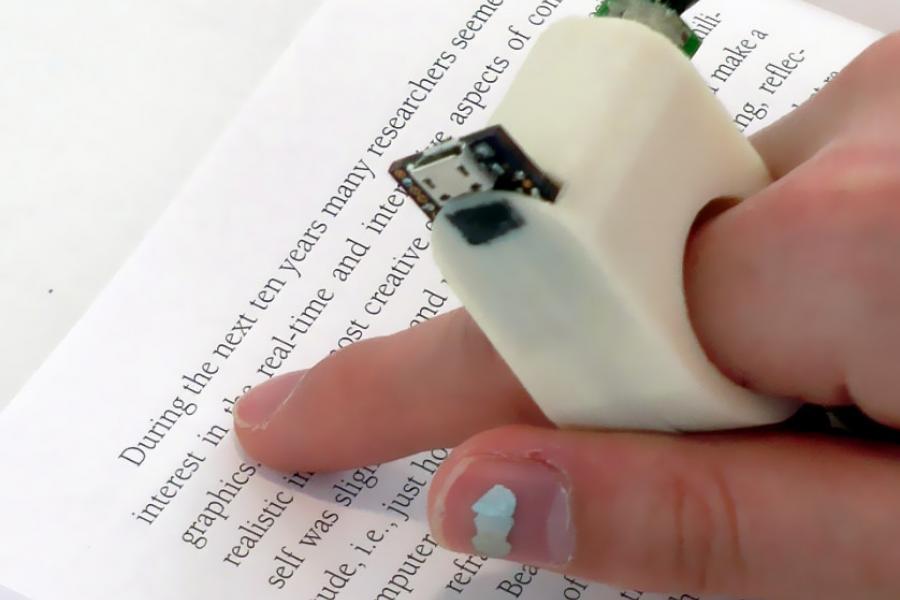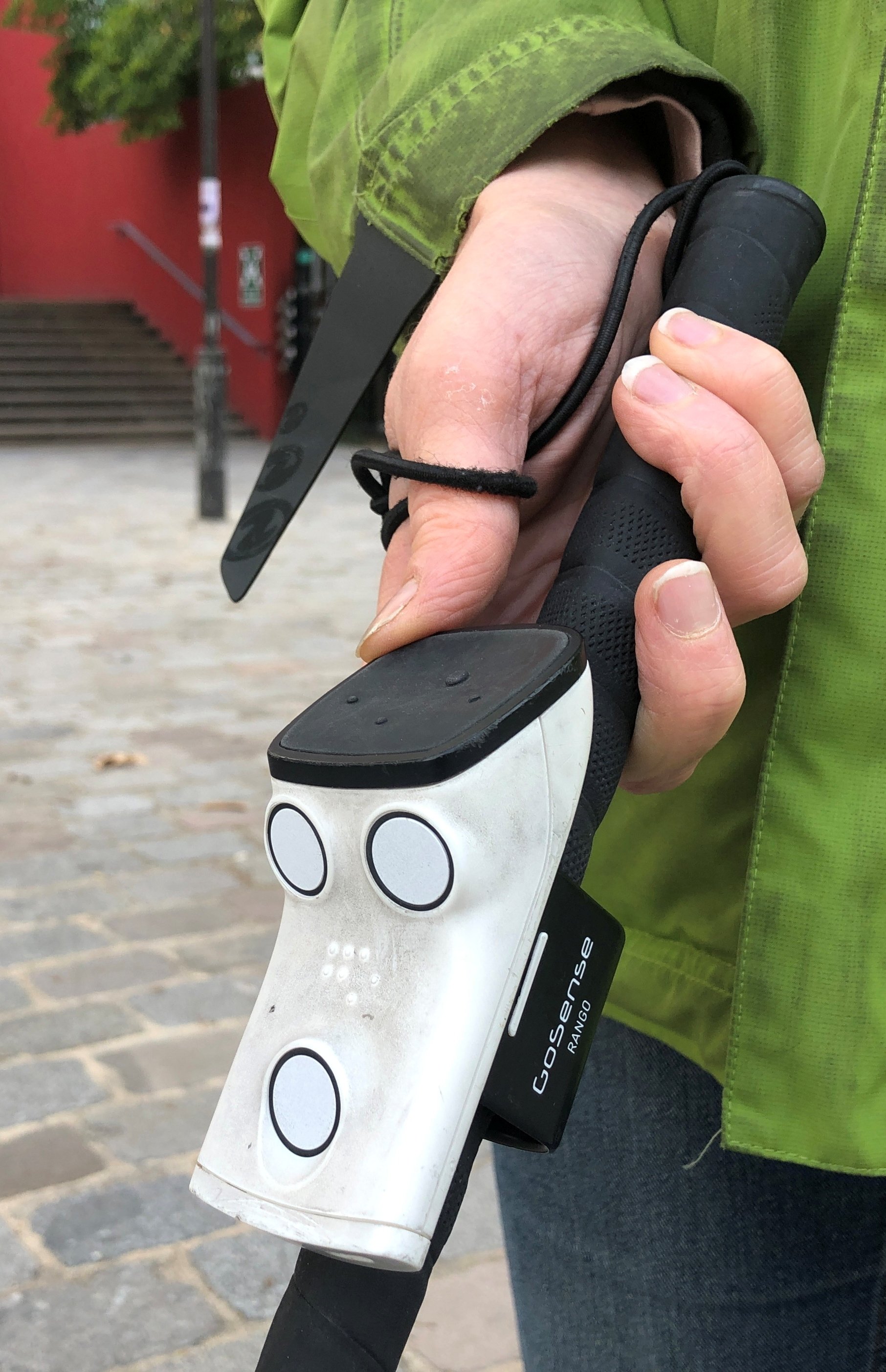OCR Devices for the Blind: Turning Text into Speech with Ease
OCR Devices for the Blind: Turning Text into Speech with Ease
Blog Article
A Guide to Life-Changing Assistive Technology for the Blind and Aesthetically Impaired
The development of assistive innovation has ushered in a transformative age for individuals who are visually impaired or blind, offering tools that enhance autonomy and improve daily experiences. Innovations such as wise navigating devices and AI-driven applications are redefining how customers communicate with their environments, while obtainable analysis options and clever home technologies guarantee to additional elevate the high quality of life. As these innovations proceed to evolve, one need to consider not only their capabilities yet likewise their impact on promoting independence and inclusivity. What does this mean for the future of availability?
Smart Navigation Tools
Smart navigating devices are changing the means people who are blind or visually damaged communicate with their setting. These advanced modern technologies, which incorporate general practitioners, audio comments, and haptic signals, offer individuals with vital information concerning their surroundings, enhancing their independence and movement.
One famous example is making use of smart canes furnished with sensors that identify challenges and offer real-time comments through vibrations or audio signs. These tools permit individuals to browse intricate settings, such as hectic roads or crowded public areas, with increased confidence. Additionally, wearable tools, such as wise glasses, are being established to aid in identifying faces, reading text, and recognizing things, further augmenting the user's spatial understanding.
Moreover, smart navigation devices are progressively including synthetic knowledge to analyze data and adjust to customers' preferences. This personalized technique not just boosts navigation efficiency but likewise fosters a feeling of empowerment among individuals. As technology remains to development, the potential for clever navigation tools to produce a more comprehensive and easily accessible globe for people that are blind or aesthetically impaired remains appealing, eventually improving their day-to-day experiences and interactions.
Cutting-edge Mobile Applications
Mobile applications are becoming effective tools for assisting individuals that are visually damaged or blind, offering a series of capabilities that enhance daily living. These apps harness advanced innovation to help with day-to-day tasks, enhance access, and promote self-reliance.
One group of innovative mobile applications concentrates on visual recognition. Applications like Be My Eyes attach users with sighted volunteers by means of video phone calls, enabling real-time support for tasks such as reviewing labels or browsing strange atmospheres. Apps like Seeing AI use synthetic intelligence to explain environments, reviewed text, and recognize objects, giving customers with important info at their fingertips.
Another significant location is navigation and orientation. Applications such as Aira and Neighboring Traveler supply audio advice, helping customers browse metropolitan rooms with simplicity. They supply tailored support, allowing for a more positive expedition of the setting.
Moreover, wellness and health applications cater to specific needs, such as medicine administration and physical fitness monitoring. These applications intend to promote an all natural method to wellness, making sure that users can maintain their wellness separately.
Wearable Assistive Gadgets
Wearable assistive devices represent a substantial advancement in modern technology designed to sustain individuals who are blind or aesthetically impaired. These gadgets improve wheelchair and self-reliance by supplying real-time comments regarding the surrounding environment. Among the most notable wearable innovations are clever glasses outfitted with sensors and video cameras, which can determine barriers and relay critical details through audio signs.

An additional innovative option consists of wrist-worn tools that use ultrasonic waves to find barriers and offer navigational help. These tools usually include adjustable setups, enabling individuals to tailor the alerts to their details demands.
The assimilation of man-made knowledge in wearable assistive modern technology is additionally significant, as it constantly boosts the precision and responsiveness of these devices. On the whole, wearable assistive devices are changing the lives of the visually damaged and blind, cultivating higher autonomy and enhancing lifestyle through cutting-edge options.
Easily Accessible Checking Out Solutions
Accessible analysis remedies play a vital function in allowing individuals that are aesthetically damaged or blind to involve with text throughout numerous formats. These services include a variety of modern technologies and tools developed to enhance analysis experiences, from standard print materials to digital content.
One famous service is Optical Personality Acknowledgment (OPTICAL CHARACTER RECOGNITION) innovation, which transforms printed message right into digital style, enabling customers to pay attention to or check out index the material using screen viewers. In addition, specialized e-readers geared up with text-to-speech capabilities offer personalized reading experiences, making it possible for users to readjust font dimensions and history shades for enhanced presence.
One more reliable approach is braille displays, which provide tactile feedback by transforming digital text right into braille. This enables individuals to check out touch, promoting higher freedom and access to literary works. Furthermore, mobile applications designed for reading scanned publications or documents can encourage customers with instantaneous accessibility to a large library of materials.

Smart Home Technologies
Smart home modern technologies have revolutionized the means individuals who are visually damaged or blind communicate with their living settings, improving both self-reliance and safety. These innovative options take advantage of automation and connection to create an available living space customized to the needs of individuals.
Smart speakers and voice-activated assistants provide hands-free control over numerous tools, allowing customers to adjust temperature, protection, and illumination actions via basic voice commands. This capability decreases reliance on sighted aid and cultivates a sense of freedom. Furthermore, clever lights systems can be tailored to deliver auditory responses or responsive cues, allowing people to browse their homes more properly.
Furthermore, safety systems geared up with clever electronic cameras and sensors can send out real-time notifies to individuals, improving individual safety and security without necessitating visual confirmation. Automated door locks use comfort, permitting users to safeguard their homes easily.
Integrating clever home technologies not only improves day-to-day living but also encourages social interaction through attached tools - Wearable technology for low vision. With recurring advancements in assistive technology, the future shows up appealing, as more services will certainly arise to more empower people that are blind or visually impaired, ensuring a more independent and comprehensive way of life
Conclusion
Finally, the innovations in assistive modern technology for the visually impaired and blind represent a significant leap toward improving self-reliance and lifestyle. Smart navigating tools, innovative mobile applications, wearable tools, obtainable reading solutions, and smart home technologies collectively promote an inclusive setting. This combination of innovation not only improves movement and visit this website everyday living yet also encourages individuals to engage completely with their surroundings, advertising greater freedom and engagement in culture.
Technologies such as smart navigation gadgets and AI-driven applications are redefining just how customers communicate with their surroundings, while easily accessible reading remedies and smart home modern technologies promise to further boost the high quality of life. As innovation proceeds to development, the possibility for wise navigation devices to create an extra easily accessible and inclusive world for individuals that are aesthetically damaged or blind stays appealing, inevitably improving their day-to-day experiences and communications.
Wearable assistive gadgets represent a significant improvement in modern technology developed to sustain people who are blind or aesthetically damaged. Amongst the most noteworthy wearable innovations are smart glasses equipped with sensors and video cameras, which can recognize barriers and relay essential info through sound signs.
Smart navigation devices, ingenious mobile applications, wearable tools, easily accessible analysis remedies, and wise home optical eyeglasses innovations jointly promote a comprehensive setting.
Report this page